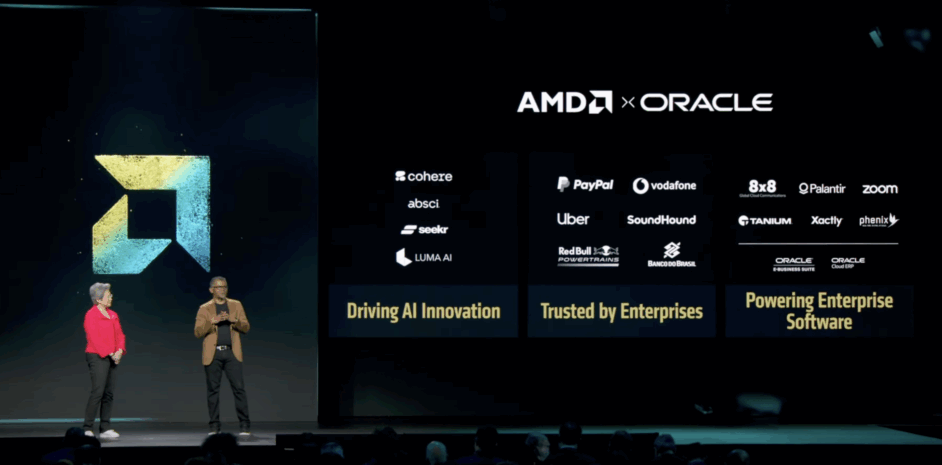Brand Risk: What It Is, Real World Examples, and Strategies for Protecting Your Brand
May 2, 2024
At the height of the COVID pandemic, Amazon Pharmacy ads were found on 30 misinformation websites by The Bureau of Investigative Journalism. This illustrates the potential for reputational damage and how poorly managed advertising campaigns can undermine customer retention and hurt your bottom line.
As Pat Condo, CEO and founder of Seekr, states, “Billions of dollars of advertising are lost every year funding websites that cannot identify misinformation.” This highlights the severe impact misinformation, hate speech, and graphic content can have on a brand’s image.
To safeguard against ad misplacement risks, it is crucial to implement robust brand risk strategies, especially in programmatic advertising, which, while efficient, requires careful management to avoid association with inappropriate content.
Let’s take a closer look at the importance of brand risk, strategies to manage it, and which tools you can use to ensure brand safety.
What is brand risk?
Brand risk refers to the potential damage a business could face based on its public persona or affiliations, whether deliberate or accidental.
Understanding this is crucial as 86% of organizations recognize that brand risk can lead to profit loss, and over half acknowledge it affects their ability to attract top talent.
Unlike brand safety, which ensures content is not harmful or inappropriate to protect the brand image, or brand reputation, which is how customers perceive a brand’s trustworthiness and performance, brand risk encompasses broader exposures. Recognizing brand risk is foundational in developing effective brand safety strategies to safeguard your company’s reputation.
Sources of brand risk in the digital age
Even with a robust advertising strategy, unforeseen risks can jeopardize your reputation. Here are critical sources of brand risk:
1. Non-contextual ad placements
Your brand’s image can suffer if your ads appear alongside inappropriate content. For example, a luxury car advertisement displayed next to news of a severe accident involving that brand.
2. Association with controversial or harmful content
If your brand’s ads are seen on websites with offensive content or misinformation, this can significantly damage your reputation. Continuous brand management vigilance is essential.
3. Negative user-generated content on social media platforms
A single adverse comment or review can escalate on social media, potentially causing widespread reputational damage.
4. Misaligned influencer partnerships
Collaborating with influencers whose values do not align with your brand can be detrimental. For example, a health and fitness brand should avoid partnerships that promote unhealthy diets.
5. Data breaches and privacy concerns
Security breaches undermine customer trust, critical for services that handle sensitive information, like online banking.
6. Regulatory changes
Not keeping up with legal standards, such as GDPR, can expose your brand to financial and reputational risks due to non-compliance.
Managing brand risk in advertising
Customer brand perception can make or break your advertising efforts. Your ads need to effectively represent your brand, without alluding to unfavorable associations.
Reputation management: It’s crucial to display ads in contexts that enhance your brand’s reputation, ensuring they are placed only in favorable locations.
Customer perceptions: Avoid messaging that could misrepresent your brand. For example, prevent the “snob effect” by aligning your messaging with your audience’s values to ensure your brand isn’t seen as elitist.
Brand awareness: Focus on consistent messaging to ensure consumers recognize and understand your brand’s offerings immediately.
Brand legacy: Utilize your history to build trust, but also address any negative past issues transparently to demonstrate your brand’s evolution.
Customer loyalty: Monitor ad placements diligently to prevent your ads from appearing next to offensive content, which could alienate your audience.
How to protect your brand: strategies for risk mitigation
Traditional content analysis methods relied on manual effort. Humans would review content and create lists of blocked websites to control where ads appear. We now have AI-powered technologies to help us quickly and proactively monitor adverse content and choose safe ad placements.
Real-time content analysis
AI-driven tools can analyze content in real time to determine if it contains anything that is out of alignment with your brand values, whether that’s a certain political lean or offensive speech. Real-time analysis can flag issues instantly, ensuring you don’t have your ads placed where they shouldn’t be.
Image and video recognition
AI-powered tools can scrutinize visual content, ensuring it upholds your brand’s image and values. These tools use content scanning and pattern recognition algorithms to analyze the content and context of the visuals. Integrating your brand guidelines, these AI-powered tools can make real-time decisions on whether imagery aligns with your brand’s identity. These tools are especially critical when advertising on video platforms such as YouTube.
Audio evaluation
In audio advertising, real-time evaluations can prevent your ads from being associated with controversial topics. For example, Seekr Align Scoring analyzes podcasts for content intensity, helping brands choose suitable advertising venues.
Why brand risk exists
Brand risk is an inherent challenge stemming from the sheer number of advertising channels, platforms, and tools available today. Each option presents unique risks, and the high engagement driven by internet polarization can jeopardize the financial performance and brand equity of a business if associated with controversial content.
Social media polarization
Social media amplifies political polarization by creating ‘echo chambers’ where users are predominantly exposed to content that reaffirms their existing beliefs. Ads placed next to controversial content can spark a social media backlash, potentially harming stakeholder trust and damaging brand equity.
Made-for-advertising sites
Some websites prioritize profit over content quality, putting financial performance at risk by placing ads next to inappropriate material through programmatic advertising. This misplacement can erode brand equity and alienate key stakeholders.
Poor moderation
Inadequate oversight on advertising platforms can lead to unintended ad placements. These misplacements can compromise stakeholder relationships and negatively impact a brand’s reputation and financial performance, undermining the trust built with both customers and investors.
Where is it safe to advertise? Programmatic advertising vs. behavioral advertising
The programmatic advertising revolution
Traditional programmatic advertising automates the buying and selling of digital advertising space using algorithms and data.
Advertisers and publishers are connected through an exchange, where algorithms purchase ad space based on predefined targeting criteria, such as demographics, location, and contextual relevance. It focuses on serving the right ad to the right audience at the right time.
The programmatic advertising industry is growing considerably, reflected in the costs of Google and Meta Ads. In 2021, programmatic advertising had already reached a value of $418 billion. Forecasts predict that it’s poised to hit $725 billion by 2026.
Advantages:
- Efficiency: Automation accelerates transactions and reduces manual work
- Scalability: There’s easy access to a vast range of publishers and ad inventories
- Cost-effectiveness: Real-time bidding processes, like dynamic pricing and competition-based pricing, can reduce costs
Challenges:
- Lack of personalization: The focus is on timing and contextuality rather than user behavior
- Brand safety concerns: There’s the potential for ads to appear next to inappropriate content
- Ad fatigue and blindness: Users get bored seeing the same ads and switch off to their impact
Example:
A company launches a nationwide campaign for a new product and uses traditional programmatic advertising to display its ads on a variety of websites without targeting specific user behaviors or contexts.
Behavioral programmatic advertising
Behavioral programmatic advertising automatically targets consumers based on their collectible online behavior. It targets criteria such as browsing history, purchase history, content engagement, and app usage.
Advantages:
- Personalization: Ads are relevant to user behavior and preferences
- Increased engagement: Consumers are more likely to click ads that resonate with their needs
- Retargeting capabilities: You can retarget potential customers who have already interacted with your brand
Challenges:
- Privacy concerns: Collecting and storing user behavior data can raise privacy issues
- Ad blockers: Potential buyers that use ad blockers may not see your ads
- Over-reliance: Over-targeting can irritate users who keep seeing the same ads
Example:
An online shoe store targets users who have previously visited their website or searched for shoes online, displaying specific ads for products they’ve shown interest in.
Contextual advertising
Contextual advertising ensures ads are placed in relevant content contexts, enhancing brand safety and relevance.
Advantages:
- Relevance: Ads are relevant to the content, which aligns with the user’s mindset
- Brand safety: It’s unlikely that ads will appear next to irrelevant, inappropriate content
- Privacy protection: It doesn’t rely on collecting personal data, reducing privacy concerns
Challenges:
- Limited personalization: It doesn’t appeal to user needs or preferences outside of the content’s context
- Dependence on content: The effectiveness is tied to the quality and relevance of the surrounding content
- Room for misinterpretation: There’s potential for the algorithm to misinterpret keywords in the content, leading to poor placement
Example:
An article that discusses the benefits of organic farming might display ads for ethically-made gardening tools, local farmer’s markets, or organic weekly recipe boxes.
6 Tools for brand safety and contextual advertising
Human moderation only goes so far. Try these tools to help improve your brand safety and increase advertising contextuality.
1. Contextual AI for podcast and news advertising: SeekrAlign™
Seekr Align leverages patented contextual AI to evaluate podcast and news content accurately and transparently, enabling brands to reach ideal audiences responsibly. This approach ensures ads are contextually relevant and aligned with audience values, promoting enhanced engagement and brand safety.
3. Third-party verification platforms
Third-party verification companies use a variety of techniques to ensure brand-safe ad placement. These methods include natural language processing, machine learning, and human reviews.
4. Keyword blocking
Keyword blocking is a straightforward way to steer clear of particular topics. You simply block keywords that don’t fit your brand image. For example, you could block out particular forms of hate speech, curse words, or other terms that go against your style guide. You could also get more granular and block out specific works. For example, a furniture waxing company might block out keywords that relate to cosmetic waxing.
5. Domain blocking
Create a list of website domains you don’t want to be associated with. You can block these websites when setting up ad campaigns, so you’re not featured next to their content.
Benefits of brand safety tools
Brand safety tools significantly simplify brand risk mitigation. Here’s how.
Enhanced proactive risk management
Brand safety tools make it easier to proactively manage ad placements. You can define parameters that align with your values and actively monitor placement. This lowers the chance of ads appearing next to harmful content.
Reputation preservation
When your ads appear in the right context, you uphold the reputation you’re aiming for. Poorly placed ads can lead to negative feedback and poor reviews. Brand safety tools help you make sure your ads are placed correctly.
Cost-effectiveness
It’s not just about reputational risk. Poor-performing advertising campaigns pose a financial risk. If your ads aren’t contextually relevant, you won’t get a good return on investment (ROI). Brand safety tools improve ROI by placing ads where they’re most contextually relevant.
Informed decision-making
It takes a lot of work to analyze ad placements manually. These tools provide insights to help you make informed decisions about ad placement. This way, your advertising efforts directly align with your brand strategy.
Innovation and adaptability
Brand safety tools help you stay on top of changes in the advertising space. They make it easier to respond in real-time to cultural mindset shifts, regulatory changes, and evolving consumer expectations.
Plus, you can leverage analytics to pinpoint successful strategies. This can help you capitalize on new advertising opportunities without compromising user brand values.
Final thoughts
Effective brand risk management is crucial for maintaining your reputation and customer loyalty. Tools like SeekrAlign ensure that your advertising campaigns are always aligned with reliable and high-quality content that supports your brand values, safeguarding against potential risks and enhancing your success in a competitive market.



